
Notes, Notices, and Cautions
NOTE: A NOTE indicates important information that helps you make better use of your projector.
NOTICE: A NOTICE indicates either potential damage to hardware or loss of data and tells you how to avoid the problem.
CAUTION: A CAUTION indicates a potential for property damage, personal injury, or death.
____________________
Information in this document is subject to change without notice. ?? 2010 Dell Inc. All rights reserved.
Reproduction of these materials in any manner whatsoever without the written permission of Dell Inc. is strictly forbidden.
Trademarks used in this text: Dell and the DELL logo are trademarks of Dell Inc.; DLP and DLP logo are trademarks of TEXAS INSTRUMENTS INCORPORATED; Microsoft and Windows are either trademarks or registered trademarks of Microsoft Corporation in the United States and/or other countries.
Other trademarks and trade names may be used in this document to refer to either the entities claiming the marks and names or their products. Dell Inc. disclaims any proprietary interest in trademarks and trade names other than its own.
Model S300w
March 2010 Rev. A01












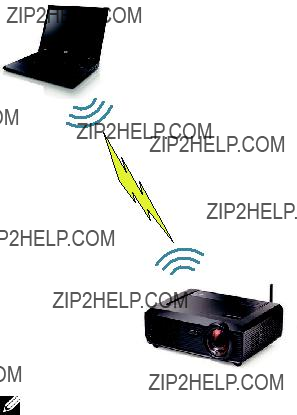


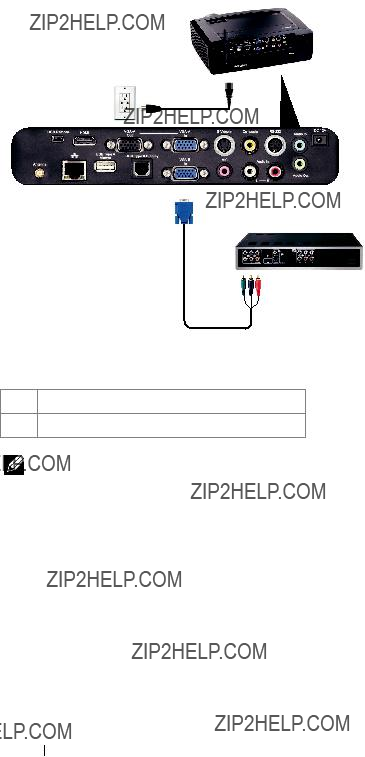
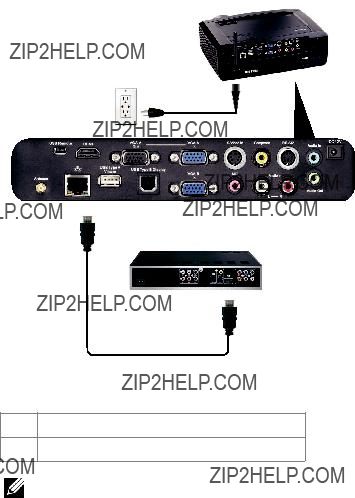







 223"(566.42 cm)
223"(566.42 cm) 178"(452.12 cm)
178"(452.12 cm)







 or
or  buttons on your projectors control panel or remote control.
buttons on your projectors control panel or remote control. button on your projector???s control panel or remote control.
button on your projector???s control panel or remote control. or
or  buttons on your projector???s control panel or remote control. The color changes to dark blue. When an item is selected, the color changes to dark blue.
buttons on your projector???s control panel or remote control. The color changes to dark blue. When an item is selected, the color changes to dark blue. or
or  buttons on the control panel or remote control to adjust the settings.
buttons on the control panel or remote control to adjust the settings. button on the control panel or the remote control.
button on the control panel or the remote control. button or press the
button or press the 
 to detect
to detect 



 to detect
to detect  to detect
to detect 



 to detect Composite Video signal.
to detect Composite Video signal.  to detect HDMI signal.
to detect HDMI signal.



 to activate Input Select Multiple Display menu.
to activate Input Select Multiple Display menu. to activate Input Select Advanced menu.
to activate Input Select Advanced menu. to access the projector's Wireless Guide screen. See
to access the projector's Wireless Guide screen. See

 and
and 



 to enable or disable
to enable or disable  and
and  to enable or disable
to enable or disable 



 and
and 



 to enable or disable
to enable or disable  and
and  to enable or disable Composite Video input.
to enable or disable Composite Video input. 
 and
and 



 to enable or disable HDMI input.
to enable or disable HDMI input.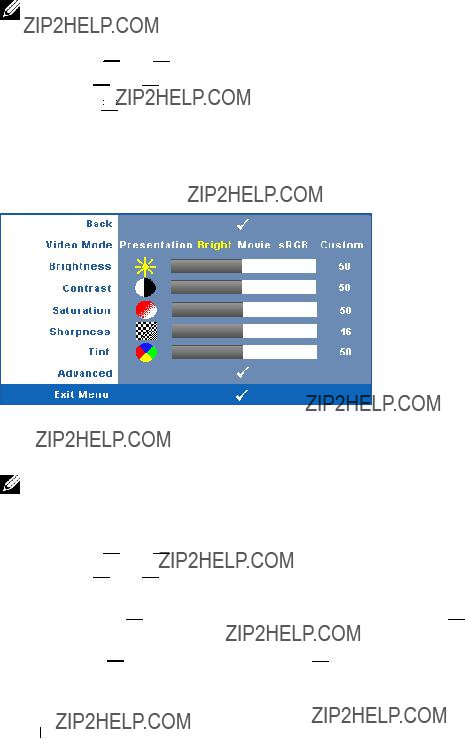
 and
and 

 and
and  to adjust the display contrast.
to adjust the display contrast. to activate
to activate 



 and
and 




 and
and 



 to adjust the display contrast.
to adjust the display contrast. to decrease the amount of color in the image and
to decrease the amount of color in the image and  to increase the amount of color in the image.
to increase the amount of color in the image.



 to decrease the sharpness and
to decrease the sharpness and  to increase the sharpness.
to increase the sharpness.




 to increase the amount of green in the image and
to increase the amount of green in the image and 
 to increase the amount of red in the image (available for NTSC only).
to increase the amount of red in the image (available for NTSC only).








 to activate
to activate  and
and  to adjust the display white intensity.
to adjust the display white intensity.
 4:3 ??? The input source scales to fit the screen and projects a 4:3 image.
4:3 ??? The input source scales to fit the screen and projects a 4:3 image. Wide ??? The input source scales to fit the width of the screen to project a wide screen image.
Wide ??? The input source scales to fit the width of the screen to project a wide screen image. to activate
to activate 



 to view zoomed image.
to view zoomed image. or
or  and press
and press  to view.
to view. to activate
to activate 


 to navigate projection screen.
to navigate projection screen. to move the image to the left and
to move the image to the left and 



 to move the image to the right.
to move the image to the right.



 to move the image down and
to move the image down and 



 to move the image up.
to move the image up.
 4:3 ??? The input source scales to fit the screen and projects a 4:3 image.
4:3 ??? The input source scales to fit the screen and projects a 4:3 image. Wide ??? The input source scales to fit the width of the screen to project a wide screen image.
Wide ??? The input source scales to fit the width of the screen to project a wide screen image. to activate
to activate 



 to view zoomed image.
to view zoomed image. or
or  and press
and press  to view.
to view. to activate
to activate 


 to navigate projection screen.
to navigate projection screen.

 to activate the
to activate the Front
Front  Rear
Rear 
 NOTE:
NOTE: to configure the
to configure the 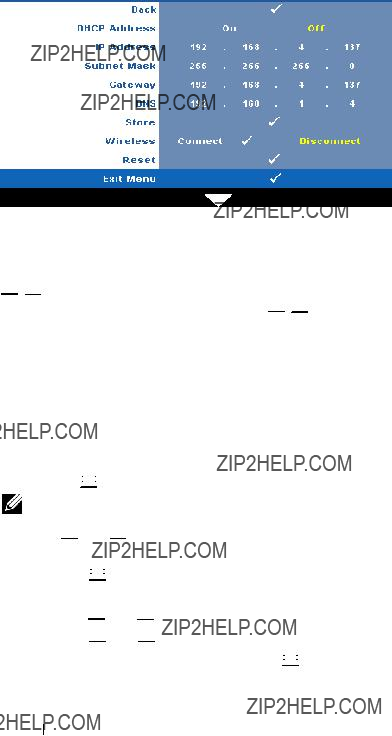

 to select the number of IP Address, Subnet Mask, and Gateway. Key in Enter to confirm each number and then use
to select the number of IP Address, Subnet Mask, and Gateway. Key in Enter to confirm each number and then use 
 to set the next item.
to set the next item. to save the changes made in network configuration settings.
to save the changes made in network configuration settings. and
and  button to select IP Address, Subnet Mask, Gateway, DNS and Store.
button to select IP Address, Subnet Mask, Gateway, DNS and Store. button to enter IP Address, Subnet Mask, Gateway or DNS to set the value. (The selected option is highlighted in yellow)
button to enter IP Address, Subnet Mask, Gateway or DNS to set the value. (The selected option is highlighted in yellow) and
and  button to select the option.
button to select the option.  and
and  button to set the value.
button to set the value. button to exit.
button to exit.
 button to store the settings.
button to store the settings. to reset network configuration.
to reset network configuration.




 to activate menu settings. The menu settings consists of the following options:
to activate menu settings. The menu settings consists of the following options:




 to activate screen settings. The screen settings menu consists of the following options:
to activate screen settings. The screen settings menu consists of the following options:



 to capture the screen display, the following message appears on the screen.
to capture the screen display, the following message appears on the screen.



 to delete the captured picture and set back to the default setting.
to delete the captured picture and set back to the default setting.



 to change audio settings. The audio settings menu consists of the following options:
to change audio settings. The audio settings menu consists of the following options:



 to decrease the volume and
to decrease the volume and  to increase the volume.
to increase the volume. 




 to activate power settings. The power settings menu consists of the following options:
to activate power settings. The power settings menu consists of the following options:



 to activate security settings. The security settings menu allows you to enable and set password protection.
to activate security settings. The security settings menu allows you to enable and set password protection.
 and then select
and then select  .
.


 and
and  buttons on the control panel simultaneously for 2 seconds. You can also invoke the test pattern 2 by pressing and holding down
buttons on the control panel simultaneously for 2 seconds. You can also invoke the test pattern 2 by pressing and holding down  and
and  buttons on the control panel simultaneously for 2 seconds.
buttons on the control panel simultaneously for 2 seconds. to reset all settings to its factory default, the warning message below appears.
to reset all settings to its factory default, the warning message below appears.





 .
. . The icon turns green.
. The icon turns green. again.
again. .
.
 to display the menu.
to display the menu.





 button on your projector's control panel or remote control to select.
button on your projector's control panel or remote control to select.

 to start conversion.
to start conversion.


 Full screen projection ??? The presentation from the computer occupies the whole screen.
Full screen projection ??? The presentation from the computer occupies the whole screen. Split 1 - The presenation from the computer appears on the upper left corner of the screen.
Split 1 - The presenation from the computer appears on the upper left corner of the screen. Split 2- The presenation from the computer appears on the upper right corner of the screen.
Split 2- The presenation from the computer appears on the upper right corner of the screen. Split 3- The presenation from the computer appears on the lower left corner of the screen.
Split 3- The presenation from the computer appears on the lower left corner of the screen. Split 4- The presenation from the computer appears on the lower right corner of the screen.
Split 4- The presenation from the computer appears on the lower right corner of the screen. Stop - Projection from the computer is stopped.
Stop - Projection from the computer is stopped.







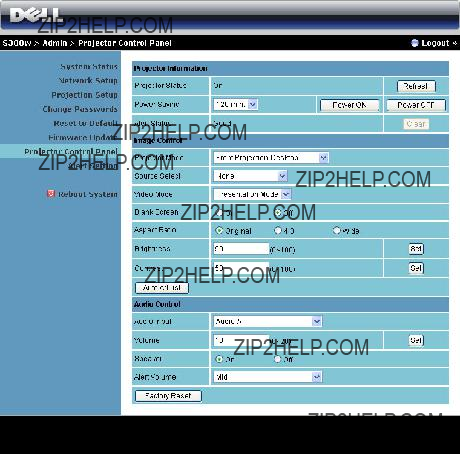




 Internet Options
Internet Options  General
General  Temporary Internet Files
Temporary Internet Files  Settings
Settings 




 >
> 







 LAMP(S) INSIDE THIS PRODUCT CONTAIN MERCURY AND MUST BE
LAMP(S) INSIDE THIS PRODUCT CONTAIN MERCURY AND MUST BE










